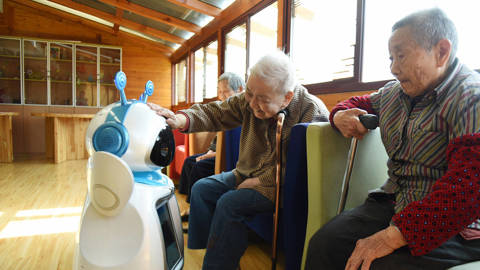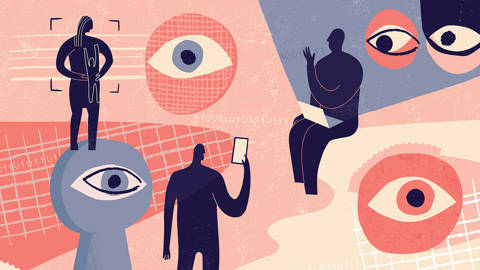Doctors and medical researchers often give patients a treatment that looks like the real thing, but is in fact a “fake.” Such treatments – called “placebos” – are applied in two situations. They are used in research to “blind” patients – and often to “blind” researchers as well – so that it is not known whether a given patient is receiving medication or, say, merely a lactose tablet. This is important, if one wants to test scientifically whether a new medication (or treatment) is really effective.
But doctors and researchers also believe that giving a patient a pill can have powerful effects on disease, even when the pill contains no active substance. For half-a-century, it has been held that placebos can affect not only subjective sensations – such as when a patient receiving a lactose tablet reports a decrease in pain – but also objective outcomes, such as swelling and even myocardial infarction.
Indeed, in 1955, Henry Beecher published a famous article in the
Journal of the American Medical Association
entitled, “The Powerful Placebo” in which he claimed that placebos could be effective in one-third of patients. In the decades that followed, anecdotal evidence has frequently been regarded as clinical proof that patients benefit from placebos; their use has come to be seen by some practitioners as not just a research tool, but as a legitimate therapeutic technique.
It is, of course, natural to believe that a sham medical treatment that looks like a real one may be effective. After all, it is common knowledge that what goes on in the mind can have physical consequences. For example, strong fear, as with soldiers in battle, increases heart rates and blood pressure and may incite uncontrolled defecation or urination.
But most research on the effect of placebos has been of poor quality. For example, a common approach has been to give a group of patients a placebo and compare their condition before and afterwards. If the patients improved, this was regarded as evidence that the placebo worked – even though patients often get better without any treatment at all. If we wish to study the possible effect of placebos, it is necessary to have a control group of patients who receive no treatment at all.
Such studies – in which randomly selected groups of patients who receive a placebo are compared with a randomly selected control group that receives no treatment – are difficult to find. At the Nordic Cochrane Centre and the University of Copenhagen, Asbjørn Hróbjartsson and I performed a systematic review of 130 studies of placebo effects that fulfilled basic statistical requirements. The types of placebos that were investigated in these trials were either pharmacological (say, a lactose tablet), physical (say, an ultrasound machine that was turned off), or psychological (say, an undirected, neutral discussion).
Our findings were recently published in
The New England Journal of Medicine
. Like most researchers and practitioners, we started our research believing that placebos could have powerful clinical effects, but were surprised by what we found in the data. When clinical outcomes of placebos were measured on a binary scale, such as improved/not improved, we could not detect any placebo effects.
Nor did we find any effect on objective outcomes measured on a continuous scale, such as blood pressure or weight loss. We did find an apparent effect on subjective continuous outcomes such as pain, but these results were weak and unreliable. We noticed, for example that the larger the study, the smaller the effect – and small studies are statistically less reliable than bigger ones, and often exaggerate the effect.
The weak effect of placebos on subjective outcomes, such as pain, may also be spurious for another reason. In almost all relevant studies, the patients were randomly divided into three groups: those receiving a medically active treatment, those receiving a placebo treatment, and those receiving no treatment. But it is a well-known phenomenon in health care research that it is impossible in these kinds of studies to prevent a bias in the way patients report their subjective states. Those in the group receiving placebos may hope that they receive an active treatment and, although they do not really improve, may report a small decrease in pain to please the investigator. Conversely, patients in no-treatment group may be disappointed, leading them to exaggerate their pain.
These statistical and reporting biases may be entirely responsible for the effect of placebos on patients experiencing pain found in our study. Even if real, the effect we found was rather weak – an average decrease of 6.5% – and probably without any clinical relevance because other studies have shown that decreases in pain should be twice the amount we found, in order to have a significant effect on patients’ well-being.
Our research thus refutes the claim that giving patients placebos can, by itself, produce powerful clinical effects. But some researchers have a much broader concept of placebo effect, including the possible effect on the patient’s health of his overall interaction with the health-care provider, and we have not ruled out the possibility of such an effect.
We all know that it makes a difference if one is cared for by an empathetic nurse or a doctor. What is not known is whether any improvement in health in such cases is due to the “good feeling” or other psychic states generated by the interaction with the care provider – something that could be equated with a placebo effect. What we do know is that a good doctor may be better at convincing the patient that he should take his medication regularly, and this may be the real cause of improved health. We would not call this a placebo effect.
Our research does not suggest that placebos should be abandoned in clinical trials. If they are not used, for example, investigators who know that a patient is receiving a medically active treatment may react differently to possible adverse effects and prematurely remove the patient from the trial. Placebos may be useful, therefore, by blinding investigators as well as patients.
But the use of placebos in clinical practice is another matter. A practitioner who administers a placebo wants to benefit the patient by making the patient believe that he is receiving an active treatment. This is an act of deception that is as ethically problematic as it is medically dubious, and it jeopardizes the mutual trust that an effective patient-provider relationship requires.








